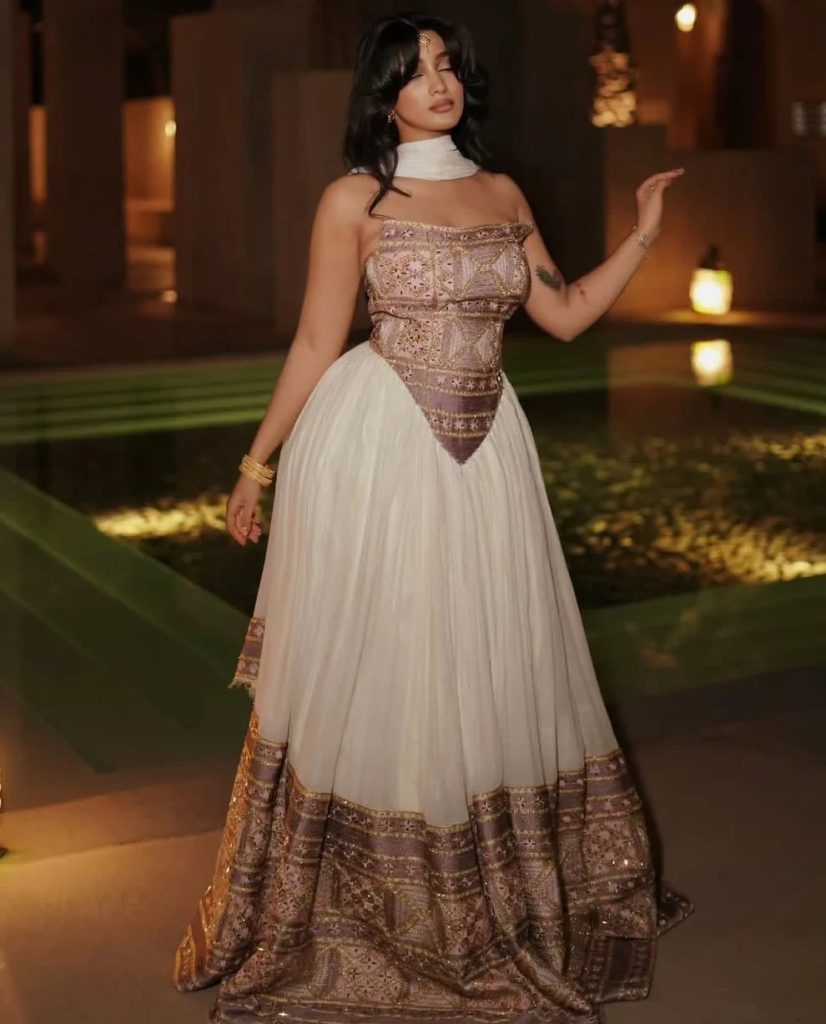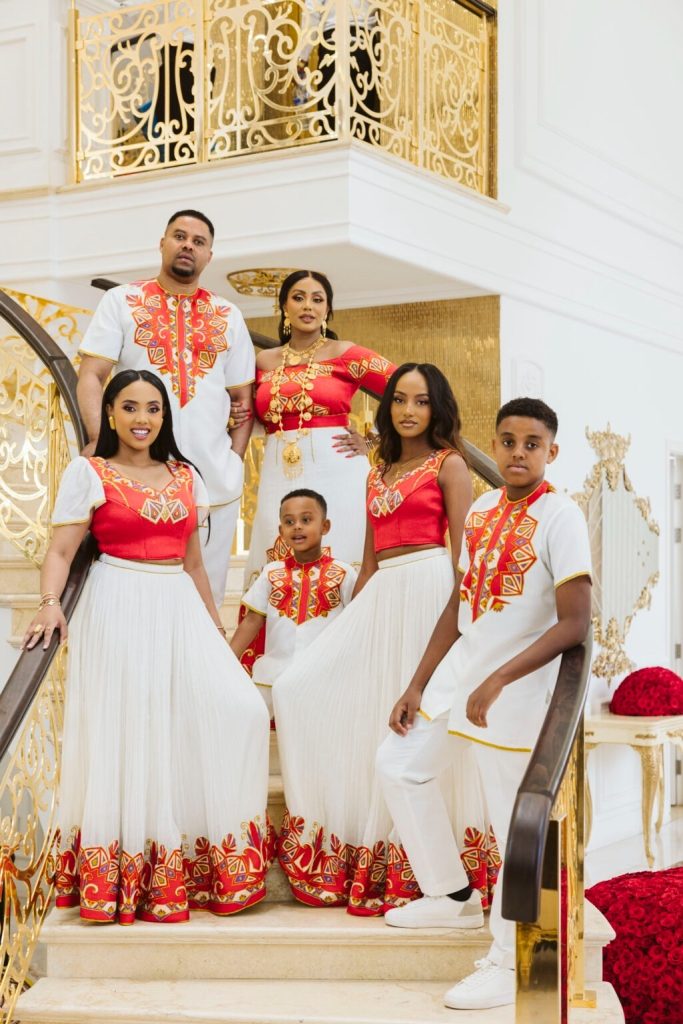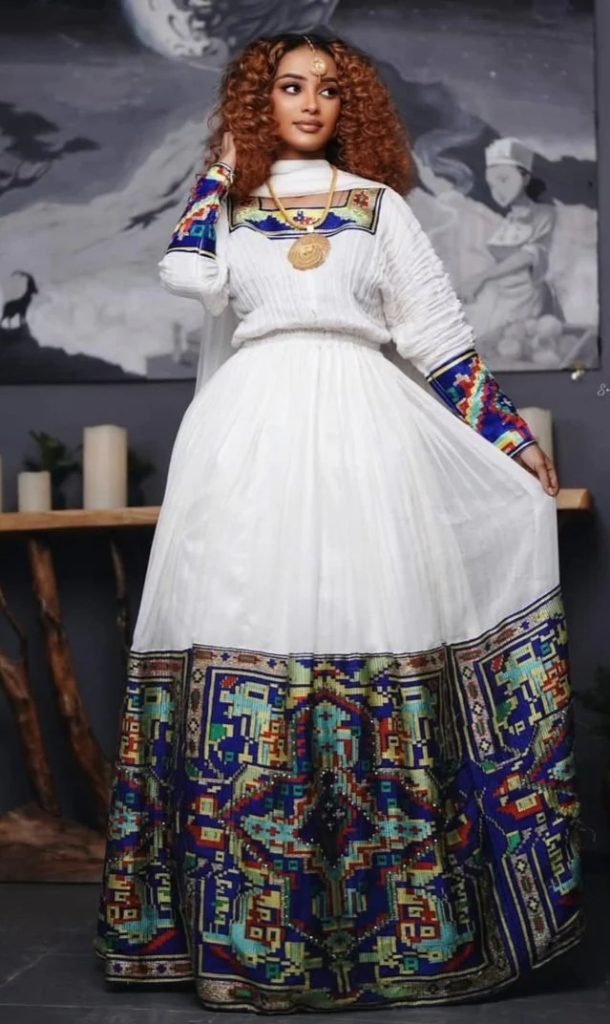Luxury Ethiopian Dresses: Handmade Habesha Fashion for Special Events
Ethiopian traditional dress has long been a symbol of cultural pride and timeless style. For generations, these garments have carried deep meaning, connecting people to their heritage while evolving to meet modern fashion trends. Among the most iconic forms is the Habesha dress, also known as Habesha kemis, distinguished by its delicate handwoven cotton, intricate embroidery, and elegant draping.
In recent years, the global fashion industry has turned its attention to the Ethiopian traditional dress not only for its beauty but also for the craftsmanship that goes into every handmade piece. Whether worn at weddings, graduations, or cultural festivals, these dresses are more than just clothing; they are living representations of identity, history, and artistry. This article explores the luxury side of Ethiopian and Eritrean dresses, highlighting their cultural significance, unique designs, and the reasons they remain highly sought after for special occasions.
The Cultural Significance of Ethiopian Traditional Dress
The roots of the Ethiopian traditional dress stretch back centuries, reflecting Ethiopia’s diverse ethnic groups and their rich heritage. The most recognisable form, the Habesha kemis (ሐበሻ ቀሚስ), is typically made from white cotton known as shemma. Artisans hand-weave this fabric on traditional looms, creating a soft yet durable textile that serves as the base for the dress.

Luxury Ethiopian traditional dress for women with a modern twist
Traditionally, these garments are adorned with tibeb, a decorative woven border often stitched along the hem, cuffs, and neckline. The tibeb patterns differ across regions, each carrying a symbolic meaning. For example, geometric gold-thread designs often represent prosperity, while bold colours like green and red highlight national pride.
The Ethiopian dress has always been closely tied to spirituality and cultural events. It is common at Orthodox Christian celebrations, weddings, and public holidays such as Meskel and Timket. In these settings, the dress is not only about elegance but also about respect for tradition and community values.
Habesha Dresses vs Eritrean Dresses: Shared Roots, Unique Identities
Ethiopian and Eritrean cultures share intertwined histories, which is why their traditional clothing also reflects strong similarities. Both the Habesha dress and Eritrean dress use handwoven cotton and embroidery as their foundation. They are usually white or cream with vibrant tibeb patterns, and both are worn with a matching shawl called a netela or shamma.
The distinctions are subtle but meaningful. In Eritrea, embroidery often appears in bold colours that cover larger sections of the dress, giving the Eritrean dress a striking presence. In Ethiopia, the designs tend to be more concentrated around the borders of the garment, creating a balanced, flowing look.
For the diaspora, these differences become even more pronounced. Many designers adapt the Habesha kemis and Eritrean dress to fit global fashion trends, blending traditional embroidery with modern tailoring. Whether in Addis Ababa, Asmera, London, or Melbourne, these dresses continue to evolve while preserving their authenticity.
Craftsmanship Behind Luxury Habesha Dresses
What truly sets a luxury Ethiopian traditional dress apart is the level of craftsmanship involved. Unlike mass-produced garments, authentic Habesha dresses are painstakingly handmade. The process starts with spinning raw cotton into thread, which is then handwoven into fine fabric. Skilled artisans spend hours creating intricate tibeb embroidery, often with metallic threads in gold or silver.
The handmade quality not only makes each dress unique but also elevates it to a luxury status. When you wear a Habesha kemis, you’re not just putting on clothing; you’re wearing a piece of art that carries the labour and love of its maker. This slow fashion process also aligns with the growing global demand for sustainable and ethically made garments.
Luxury designers are now pushing the boundaries by blending traditional methods with modern aesthetics. For example, some Ethiopian dresses feature fitted silhouettes, layered skirts, or contemporary necklines while still incorporating authentic tibeb embroidery. This balance of old and new keeps the dress relevant across generations.
Habesha Kemis for Special Events
The Habesha kemis has always been more than everyday wear. It is especially cherished during significant life events and cultural ceremonies. For weddings, brides often wear an elaborate Ethiopian traditional dress with rich golden embroidery, paired with a matching shawl and sometimes a gold-plated crown. The groom may wear a complementary outfit in the same fabric, symbolising unity.
Graduations and milestone celebrations are also occasions where the Habesha dress shines. Wearing it connects younger generations to their heritage, even if they live far from Ethiopia or Eritrea. Families often choose coordinated sets, ensuring that the embroidery patterns match across parents, children, and extended relatives.

Family wearing matching Ethiopian traditional dresses in red and white
Religious holidays such as Easter (ፋሲካ), Epiphany (ጥምቀት), and Meskel (መስቀል) are marked by crowds dressed in white Ethiopian dresses. The collective display of tradition highlights the dress’s ability to bring people together in a shared cultural identity.
Modern Influence and Global Popularity
In recent decades, the Ethiopian traditional dress has gained recognition on the global fashion stage. Designers from the diaspora are showcasing collections in cities like New York, Paris, and London, bringing attention to the artistry of Habesha dresses. This international spotlight has elevated the perception of the garment from a cultural piece to a luxury item.
Celebrities and influencers within the Ethiopian and Eritrean communities also play a role in popularising the style. Social media platforms are filled with wedding photos, fashion shoots, and cultural festivals where Ethiopian dresses take centre stage. For the diaspora, wearing the Habesha kemis is not only a fashion statement but also a way to remain connected to their roots.
The appeal also extends to non-Habesha audiences. Many people are drawn to the elegance, minimalism, and sustainability of the dress. As fashion increasingly embraces global influences, the Ethiopian dress stands out for its authenticity and craftsmanship.
How to Choose the Right Ethiopian Traditional Dress
Selecting the perfect Ethiopian traditional dress depends on several factors. The first is the occasion. For weddings or major celebrations, dresses with heavy embroidery and gold thread are preferred, while simpler styles may suit graduations or family gatherings.
Colour choice is another important aspect. While white remains the dominant base colour, embroidery can range from subtle neutrals to bold contrasts. Gold and green are especially popular for formal occasions.
Finally, buyers should consider tailoring. A handmade Habesha kemis can be custom-fitted, ensuring it flatters the wearer’s body shape. While ready-made options exist, luxury comes from commissioning a dress designed specifically for you.
Preserving Tradition: Care and Maintenance of Ethiopian Dresses
One of the challenges of owning a handmade Ethiopian dress is proper care. Since the fabric is pure cotton, it requires gentle washing, ideally by hand, to avoid shrinking or damaging the embroidery. Many people recommend using mild soap and air-drying the garment away from direct sunlight.
Storing the dress properly is also important. Folding it with tissue paper or keeping it in a breathable garment bag helps preserve the delicate embroidery. In many families, these dresses are passed down through generations, making preservation part of cultural respect.
Wearing a Habesha dress also comes with an understanding of cultural significance. It is more than fashion, it’s a marker of identity and tradition. Treating it with care honours the communities and artisans who keep this heritage alive.
Where to Find Authentic Ethiopian Traditional Dresses
For those seeking authenticity, it’s essential to distinguish between handmade garments and mass-produced imitations. True Ethiopian traditional dresses are made by skilled artisans who follow time-honoured techniques. Supporting these craftspeople not only guarantees quality but also sustains cultural traditions.
In the diaspora, boutiques and online platforms now make it easier to access luxury Habesha dresses. However, authenticity should always remain the priority. When purchasing, check the origin of the fabric, the type of embroidery, and whether the garment has been handmade.
The importance of cultural preservation is echoed by global organisations such as UNESCO’s work on intangible cultural heritage, which highlights the value of protecting traditional clothing practices. Choosing authentic garments contributes to this effort while giving you a unique piece of history.

Luxury Eritrean traditional dress with colourful detailing
The Ethiopian traditional dress is more than just attire; it is a story of heritage, craftsmanship, and identity. From weddings to global fashion shows, it continues to hold a place of honour as both a cultural symbol and a luxury fashion item. The handmade quality of the Habesha kemis and the richness of its embroidery make it a timeless choice for special events.
In a world increasingly dominated by fast fashion, the Ethiopian dress and Eritrean dress stand apart as sustainable, meaningful, and beautiful expressions of tradition. Whether you are part of the Habesha community or someone appreciating the artistry from afar, these garments remain a powerful reminder that true luxury is found in culture, craftsmanship, and connection.
